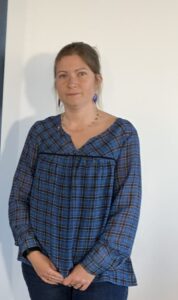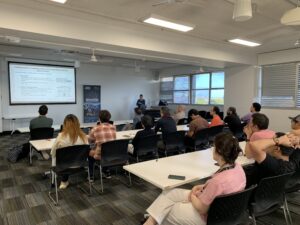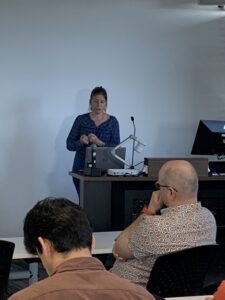 Australia is a land of ‘droughts and flooding rains’*, and when they occur soils can swell or shrink, which can result in damage to buildings and homes, and pose a risk to human life.
Australia is a land of ‘droughts and flooding rains’*, and when they occur soils can swell or shrink, which can result in damage to buildings and homes, and pose a risk to human life.
The personal and collective financial cost of addressing flood-related structural damage to homes is not limited to Australia. It is an international challenge.
Damage to infrastructure could be minimised or avoided with a better understanding of soil behaviour under different conditions, and RIIS Hub is contributing to global learning on the topic.
To further explore international learnings on the topic, RIIS Hub team recently welcomed eminent scholar and researcher in soil-related structural impacts Associate Professor Mathilde Morvan from the Pascal Institute & POLYTECH Clermont in France to explore potential solutions.
A/Prof Morvan’s current research seeks to develop a better understanding of soil characterisation. She is also looking to develop new, inexpensive diagnostic methods that can predict swelling soils near detached houses.
A/Prof. Morvan’s work has close alignment to some of the and predictive techniques being developed in RIIS Hub’s Theme 3 Research program, where researchers are exploring the effect of temperature on the movement of soils using a thermo-plasticity model as part of flaw detection and failure avoidance research.
During her Seminar to the RIIS Hub team, A/Prof Morvan shared
• The cost of damage due to soil shrinkage and swelling on detached houses is the highest among natural disasters in France after floods.
• While methods for characterising these soils exist, they are generally not affordable for most households, and as a result, this foundational soil understanding is often neglected at building and planning development stages.
• One objective of A/Prof. Morvan’s work is to provide a methodology for characterising these soils, and to find simple. Another is to find affordable methods to help spur more due diligence soil investigations to inform structural planning and help prevent damage to homes during disasters.
• A current project proposes to develop a method for monitoring individual houses in high-risk areas, with the aim of providing reliable data.
Following the presentation A/Prof. Morvan spent 1:1 time collaborating with members of the RIIS Hub team, exploring future research and data sharing.
RIIS Hub Director Prof. Nasser Khalili shared:
“We want to make flood affected dwellings are as ‘safe as houses’, and ensure Aussies and their homes are better-prepared to weather future storms.
“Building a collaborative and close-working relationship with other researchers working on related infrastructure resilience projects is a practical way to expand and share knowledge and learnings at scale, and inform the development of more robust technical solutions to solve similar problems.”
Theme 3 RIIS Hub Research involves multiple universities in NSW (UNSW, UNSW Sydney, Western Sydney University) as well as QUT in Queensland. We note that this visit was made possible thanks to NSW Chief Scientist ‘RAAP’ funding.
Theme 3 RIIS Hub researchers are designing and applying:
• Modelling, simulations, and prognostics
• Predictive modelling simulation & performance assessment
• Physics-informed artificial intelligence (AI) and machine learning & explanation